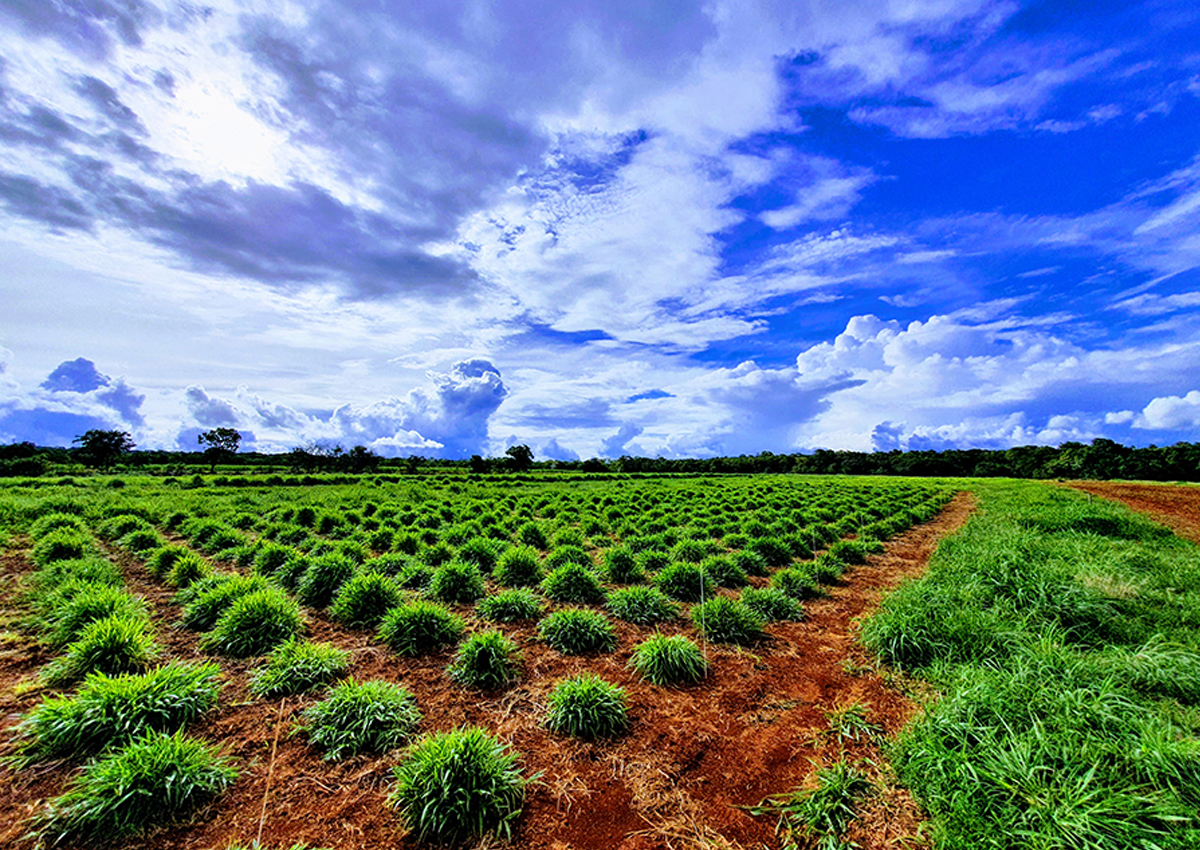
Genome Sequence of Forage Grass Now Available
April 13, 2022| |
Researchers from the Brazilian Agricultural Research Corporation (Embrapa) have produced the genome sequence of signal grass (Urochloa ruziziensis), one of the most used forage grasses in tropical agriculture.
Embrapa researcher Marco Pessoa Filho explains that U. ruziziensis has evolutionary proximity to other Urochloa species most used in cultivated tropical pastures – U. brizantha, U. decumbens, and U. humidicola. But while these species reproduce asexually, U. ruziziensis has a mode of sexual reproduction through the exchange of pollen. This characteristic is an advantage of U. ruziziensis, as it gives the possibility of recombining the genetic diversity of the species through crosses and of selecting the best combinations by classical genetic improvement.
The genome sequence obtained in this work will be used in further research on genomics, advanced biology, genetics, characterization, and the use of genetic resources in breeding programs for tropical forage grasses. It will also serve as a basis for the discovery of genomic variants and phenotypes, characterization of germplasm and genetic mapping, and the application of new gene editing technologies such as CRISPR.
For more details, read the news release from Embrapa (in Portuguese).
| |
You might also like:
- HarvXtra® Alfalfa Trait Deregulated in Argentina
- Scientists Sequence Red Clover Genome
- APHIS Deregulates GE Low-Lignin Alfalfa
Biotech Updates is a weekly newsletter of ISAAA, a not-for-profit organization. It is distributed for free to over 22,000 subscribers worldwide to inform them about the key developments in biosciences, especially in biotechnology. Your support will help us in our mission to feed the world with knowledge. You can help by donating as little as $10.
-
See more articles:
-
News from Around the World
- IPCC Report Reveals Agriculture can Halve Emissions by 2030; Help Climate Change Adaptation
- Trends on GM Foods Consumer Perception Help Identify Policy Recommendations
- ICRISAT Develops Iron-fortified Pearl Millet
- Nigeria Starts National Performance Trials for TELA Maize
- Genome Sequence of Forage Grass Now Available
- Brazil's Biotech Sugarcane Area to Double in 2022
- Shifting to Non-GM Feed Ingredients Less Beneficial to Environment, Producers and Consumers - Report
- Agri Experts Help Identify Behavioral Factors that Influence GM Tech Acceptance
-
Research Highlights
- Bacteria that Kills Fungus Affecting Sugarcane Yields Discovered
- Protein Discovery Reveals Mechanisms of Nitrogen Assimilation in Plants
- Researchers Reveal Genetic Basis of Watermelon Seed Size
-
Plant
- Novel Plant Breeding Techniques Boosts Cereal Production
-
Read the latest: - Biotech Updates (May 2, 2024)
- Gene Editing Supplement (April 24, 2024)
- Gene Drive Supplement (February 22, 2023)
-
Subscribe to BU: - Share
- Tweet

